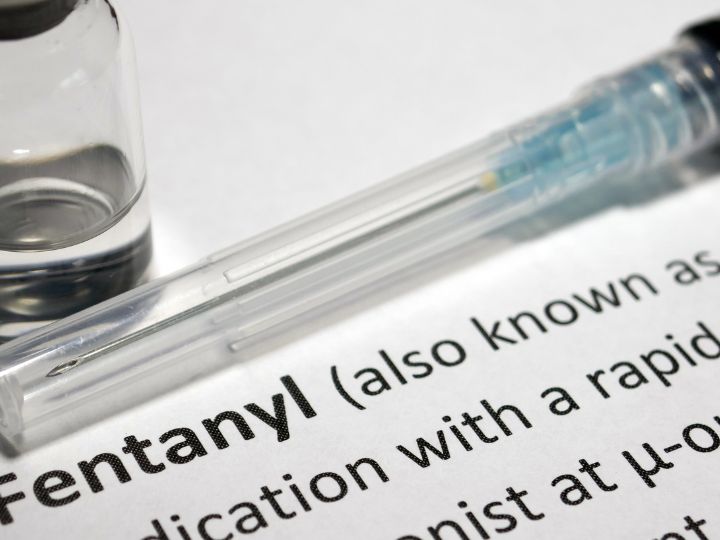In recent years, the opioid epidemic has taken a terrifying turn with the rise of fentanyl, a synthetic opioid that has proven to be one of the most dangerous drugs in circulation. As fentanyl-related overdoses continue to skyrocket, it’s crucial to understand the unique properties of this drug and the factors contributing to its deadly impact. In this article, we’ll delve into the science behind fentanyl, examine the reasons behind the surge in overdoses, and discuss the urgent need for public awareness and comprehensive harm reduction strategies.
The Potency of Fentanyl
Fentanyl is a synthetic opioid that is 50 to 100 times more potent than morphine. Originally developed as a powerful pain medication for cancer patients and those with chronic pain, fentanyl’s high potency allows it to rapidly cross the blood-brain barrier, leading to intense euphoria and respiratory depression. This potency is precisely what makes fentanyl so dangerous, as even small amounts can be lethal.
The Illicit Fentanyl Market
While pharmaceutical fentanyl is strictly regulated, the drug has found its way into the illicit drug market, often in the form of counterfeit pills or as a cutting agent in other drugs such as heroin or cocaine. Illicit fentanyl is manufactured in clandestine labs, often without proper quality control, leading to inconsistent and dangerously high doses. This unpredictability is a major contributor to the rise in overdoses, as users may unknowingly ingest a lethal amount of fentanyl.
The Rapid Onset of Overdose
One of the most alarming aspects of fentanyl is the speed at which it can cause an overdose. Due to its high potency and rapid absorption, fentanyl can lead to respiratory depression and death within minutes of ingestion. This quick onset leaves little time for intervention, making it crucial for individuals to be aware of the signs of an overdose and have access to life-saving naloxone, an opioid overdose reversal medication.
The Prevalence of Fentanyl in the Drug Supply
The rise in fentanyl-related overdoses can be attributed, in part, to the increasing prevalence of the drug in the illicit drug supply. Fentanyl’s potency and low production costs make it an attractive option for drug dealers looking to maximize profits. As a result, fentanyl has been found in a wide range of illicit substances, often without the knowledge of the end-user. This contamination of the drug supply has led to a surge in accidental overdoses among individuals who may not have intended to use opioids at all.
The Stigma and Lack of Awareness
Despite the growing crisis, there remains a significant lack of public awareness about the dangers of fentanyl. Stigma surrounding drug use and addiction can prevent individuals from seeking help or accessing life-saving resources such as naloxone. Additionally, the rapid evolution of the opioid epidemic has left many communities struggling to keep up with the changing landscape of the drug market, leading to gaps in education and harm reduction efforts.
Addressing the Fentanyl Epidemic
Combating the fentanyl epidemic requires a multi-faceted approach that prioritizes harm reduction, education, and access to evidence-based treatment. Key strategies include:
- Expanding access to naloxone and overdose prevention education
- Implementing fentanyl test strip programs to help users identify the presence of fentanyl in their drugs
- Increasing funding for evidence-based addiction treatment, including medication-assisted treatment (MAT)
- Promoting public awareness campaigns to educate communities about the dangers of fentanyl and the signs of an overdose
- Addressing the root causes of addiction through comprehensive prevention and early intervention strategies
The Need for Urgent Action
As the death toll from fentanyl-related overdoses continues to rise, it’s clear that urgent action is needed. By prioritizing harm reduction, education, and access to evidence-based treatment, we can work to save lives and address the underlying factors driving the opioid epidemic. It’s essential that we approach this crisis with compassion, understanding, and a commitment to evidence-based solutions.
Fentanyl’s potency, prevalence in the drug supply, and the rapid onset of overdose make it one of the most dangerous drugs in circulation today. The alarming rise in fentanyl-related overdoses underscores the urgent need for comprehensive strategies to address this crisis. By working together to raise awareness, expand access to life-saving resources, and promote evidence-based treatment, we can begin to turn the tide on the fentanyl epidemic and save countless lives. Remember, if you or someone you know is struggling with opioid addiction, help is available. Don’t hesitate to reach out and take the first step towards recovery.




